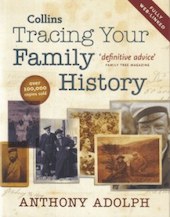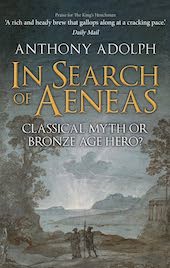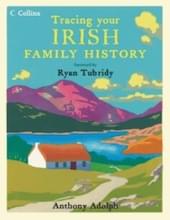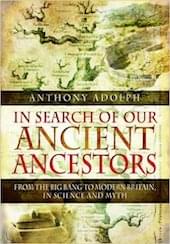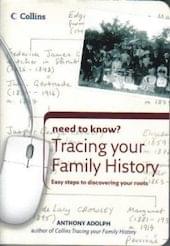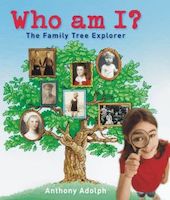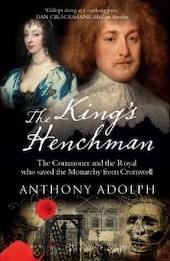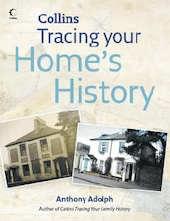PERRY NURSEY
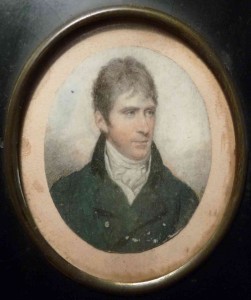
Perry Nursey 1771-1840
Perry Nursey (1771-1840) of The Grove, Little Bealings, was a landscape painter, who loved the Suffolk landscape, and pioneered the practise of painting outdoors, so as to capture the freshness of nature in a way that was impossible in the more practical environment of a studio. Nursey was also an architect and landscape gardener who left his mark on some of Suffolk’s gardens and mansions, which he developed in his distinctive, Picturesque style.
Perry Nursey is my great great great great grandfather, and over the years I have become extremely fond of him and his work, which has led me down many highways and byways in Suffolk, over and again.
As a genealogist, I have also enjoyed exploring Perry Nursey’s ancestry; his mother was a Fairfax and shares the same Fairfax ancestry as H.R.H. The Princess of Wales, a line which goes back, ultimately, to the Plantagenets. Perry Nursey’s home, The Grove in Little Bealings, was inherited by his wife Anne Simpson, whose own ancestors, the Simpsons of Wantisden, the Benningtons of Butley and the Barthrops of Hollesley, are the subject of ongoing research.
The following is an up-to-date essay about Perry Nursey, which replaces an older one which had become out of date due to my ongoing research.

PN6. Perry Nursey, ‘Seckford Hall Lodge, on the road between Little Bealings and Woodbridge, Suffolk, with workers returning from the fields’,
Perry Nursey was a Suffolk landscape painter whose love of painting the countryside, out of doors to capture the freshness of nature, helped inspire a generation of artists, from his own sons Rev. Perry Nursey and Claude Lorraine Richard Wilson Nursey, to George James Rowe and Thomas Churchyard and many more, down to the present.
Perry Nursey was baptised on 25 June 1771 at Stonham Aspall, Suffolk, son of John Nursey, a country surgeon and Catherine Fairfax from Coddenham (whose great grandfather Rev. Benjamin Fairfax, curate of Rumburgh, Suffolk, was also an ancestor of H.R.H. the Princess of Wales). He was nicknamed ‘Peregrine Pickle’ Nursey, after the popular novel of Tobias Smollett, but his forename, Perry, in fact commemorated his father’s mother’s family, the Perrys of Great Yarmouth.
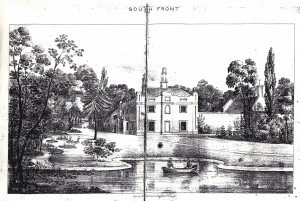
[PN72] The Grove, Little Bealings, from an old lithograph, probably taken from an original painting by Perry Nursey himself.
Their happy marriage produced 11 children, the eldest of whom, John, was baptised in Edinburgh a year later, whilst Nursey was in his second year at the university. His heart was in painting, and during his time in Edinburgh, Nursey also studied under the eminent landscape painter Alexander Nasmyth (1758-1840).
The Nurseys moved to London, probably in 1797, and he exhibited ‘A brisk gale on the Scottish coast’ (1799) [PN1]; ‘Morning’ (1801) [PN2]; ‘Playford Woods’ (1801) [PN3] and ‘Limekilns at Blackenham’ (1801) [PN4] at the Royal Academy.
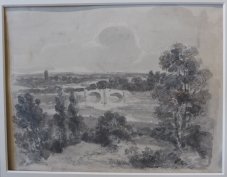
PN26. Perry Nursey, ‘Wilford Bridge’, Suffolk, with Woodbridge and the River Deben in the distance
Ann had inherited extensive leaseholds from her paternal ancestors, the Simpsons of Wantisden, and also from her mother’s family, the Benningtons of Butley and Barthrops of Hollesley, thus providing Nursey with an extensive leasehold estate around Woodbridge. They settled at Grove Farm, Little Bealings, just west of Woodbridge, which was part of Ann’s inheritance. He enlarged the farmhouse to create The Grove, a fashionable mansion surrounded by parkland, all in the ‘Picturesque’ style. Whilst he dabbled in farming, notably breeding attractive, black-faced Norfolk sheep, the income from the estate encouraged Nursey to abandon surgery and devote himself primarily to art.
A keen landscape gardener, he identified a local variety of Black Poplar, Populus nigra viridis (‘Nursey’s poplar’) and fulfilled landscaping commissions around the country, advertising his services by penning ‘An Essay on Picturesque Gardening’ in The East Anglian Magazine in January 1814, in which he advocated a Picturesque style of landscaping, inspired by the landscape paintings of Cuyp, Richard Wilson, Poussin and Claude, that mirrored ‘the beautiful simplicity and masterly disposition of plants… placed in opposition to deep shadows, to receive the highest lights’. Perry Nursey also sought architectural commissions and is believed to have made Picturesque improvements to Theberton House; Witnesham Hall, and Bredfield White House (home of his friend John FitzGerald), all in Suffolk. (But he did not design church memorials, as once believed: these were by the Nursey masons of Bungay, who were probably distant cousins of his).
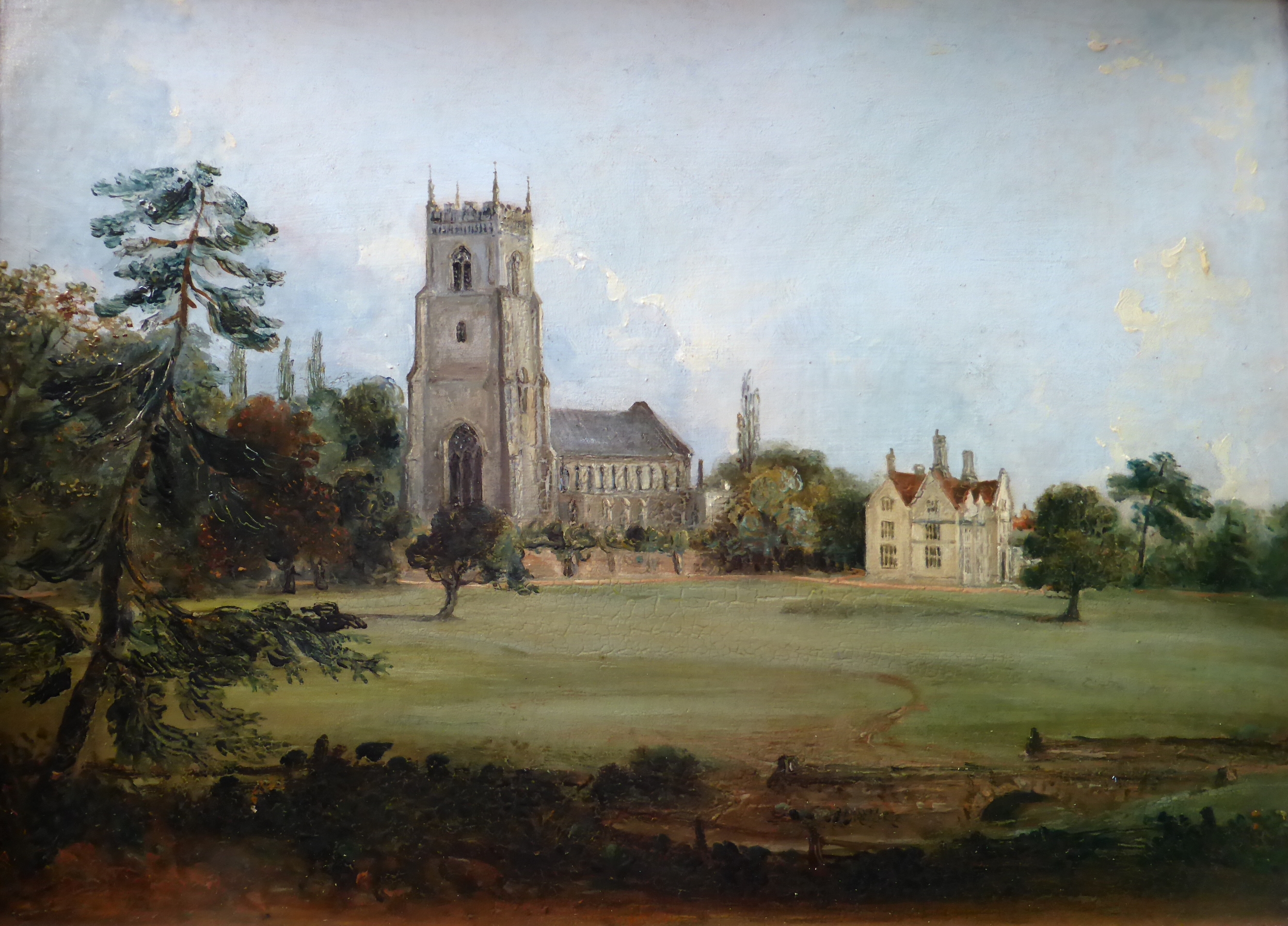
PN29. Perry Nursey, ‘Woodbridge Church and Abbey’, Suffolk
Nursey also served as a director of Nacton Workhouse from 1826 to 1833, but complained in a letter to the Ipswich Journal on 24 May 1826 that workhouses stifled poor people’s ability to support themselves, advocating looking after them in their own homes instead.
Perry Nursey was generally unsuccessful in making much money from painting, yet his love of the arts distracted him repeatedly from taking due care of his wife’s inherited lands. He sold The Grove in 1827 due to financial difficulties and moved first to Foxhall. He exhibited at the Norwich Society of Artists in 1830, and moved in 1831/2 to Foxboro’ Hall, both near Woodbridge. His fortunes were closely tied to the prosperity of farming and the price of corn, and when both slumped in the late 1820s, just at the time when his growing family needed ever more financing, his resources wore too thin.
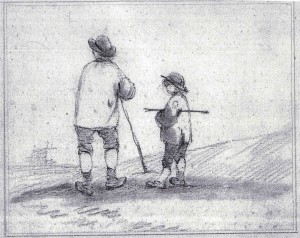
PN19. Perry Nursey, rustic man and boy.
Nursey was declared bankrupt 1833-4 and his collection of paintings and prints was auctioned to pay his debts. John FitzGerald allowed him and his family to live in Boulge Cottage on his own estate, not far from Woodbridge. Nursey quickly advertised his services as a painting and drawing master, specialising in making oil sketches from nature and he judged paintings for the Ipswich Society of Professional Artists in 1834. He then moved briefly to London, in order to have a cataract removed from his eye, following which he spent most of 1835 and 1836 living in FitzGerald’s mansion at Seaford, Sussex, recovering from a severe attack of anxiety and vertigo, and attempting to earn a living from painting. The Nurseys then moved to London, first to 5 York Buildings, New Road (now Marylebone Road), hoping to rent out rooms to lodgers, and when that failed choosing a smaller house, 3 Broadley Terrace, Marylebone.
The move to London was mainly to allow his youngest son, Claude Lorraine Richard Wilson Nursey, to attend the Royal Academy and to study under and act as assistant to Nursey’s friend Sir David Wilkie (1785-1841), who was by then Painter-in-Ordinary to Queen Victoria, and who lived only two miles away in Kensington.

PN7. Perry Nursey, ‘Woodbridge Abbey and the gates of St Mary’s Church’.
Perry Nursey died in Marylebone on 12 January 1840 and is buried at Kensal Green Cemetery, far from his native Suffolk, but his pictures live on, and through them the beauty of his native countryside, as he saw it two hundred years ago, continues to inspire and give pleasure to this day.
Perry Nursey’s career brought him into contact with many artists of his day, particularly Wilkie, whose sister almost married Nursey’s son Robert, and John Constable, who wrote to John Dunthorne on 22 February 1814, written from his house in Charlotte Street, London: ‘I am anxious about the large picture of Willy Lott’s house, which Mr Nursey says promises uncommonly well in masses &c… and tones – but I am determined to detail but not retail it out [i.e., divide it up]’. As research progresses, his influence on George James Rowe and Thomas Churchyard, and also the artistic side of Edward Fitzgerald (translator of the Rubáiyát of Omar Khayyám), who became a life-long advocate of the quality of Nursey’s work. Thanks to Nursey’s tuition and encouragement, his sons Rev. Perry Nursey and Claude Lorraine Richard Wilson Nursey were both fine artists in their own right, the latter also going on to found Bradford and Leeds schools of art, and to be a formative influence on the Pre-Raphaelite painter William Holman Hunt.
PUBLICATIONS
Over the years, I have written a number of articles about Perry Nursey and his sons Rev. Perry Nursey and Claude Lorraine Richard Wilson Nursey, including one for the Ashmolean Museum’s magazine, and also a number about the interconnected family tree of Perry Nursey and H.R.H. the Princess of Wales. They are listed about half way down the list of all my articles on the ‘My Published Work‘ page.
A full -length biograph of Perry Nursey and his artist sons is in preparation.
In the meantime, I have published individual catalogues of the known works of Perry Nursey and his sons Rev. Perry Nursey and Claude Lorraine Richard Wilson Nursey, price £15 each. These are available from me and also at John Day’s East Anglian Traditional Art Centre in Wickham Market, Suffolk.
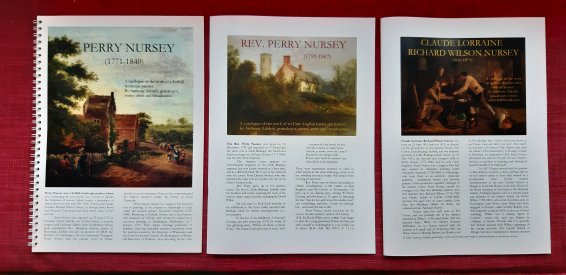
(C) all pictures and text Copyright Anthony Adolph 2019 and 2025

